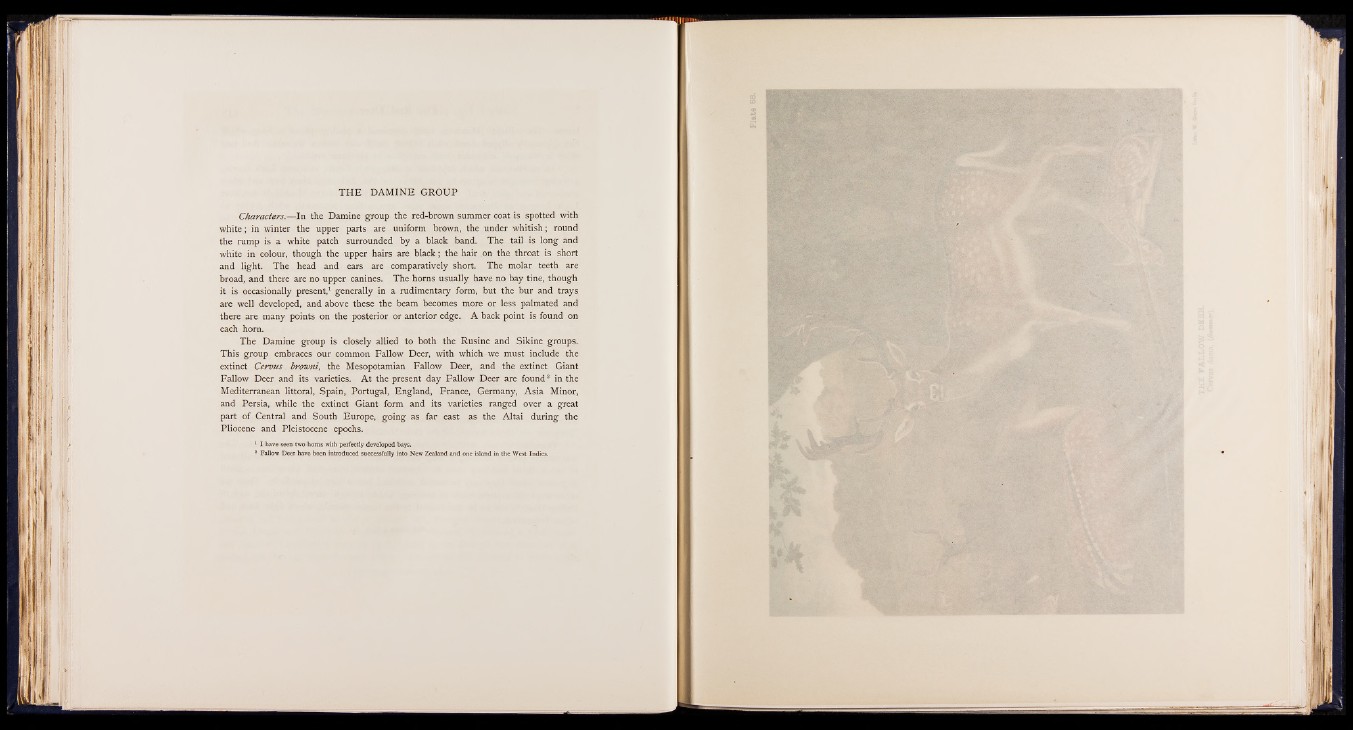
TH E DAMINE GROUP
Characters.— In the Damine group the red-brown summer coat is spotted with
white; in winter the upper parts are uniform brown, the under whitish; round
the rump is a white patch surrounded by a black band. The tail is long and
white in colour, though the upper hairs are black; the hair on the throat is short
and light. The head and ears are comparatively short. The molar teeth are
broad, and there are no upper canines. The horns usually have no bay tine, though
it is occasionally present,1 generally in a rudimentary form, but the bur and trays
are well developed, and above these the beam becomes more or less palmated and
there are many points on the posterior or anterior edge. A back point is found on
each horn.
The Damine group is closely allied to both the Rusine and Sikine groups.
This group embraces our common Fallow Deer, with which we must include the
extinct Cervus browni, the Mesopotamian Fallow Deer, and the extinct Giant
Fallow Deer and its varieties. At the present day Fallow Deer are found2 in the
Mediterranean littoral, Spain, Portugal, England, France, Germany, Asia Minor,
and Persia, while the extinct Giant form and its varieties ranged over a great
part of Central and South Europe, going as far east as the Altai during the
Pliocene and Pleistocene epochs.
1 I have seen two horns with perfectly developed bays.
1 Fallow Deer have been introduced successfully into New Zealand and one island in the West Indies.